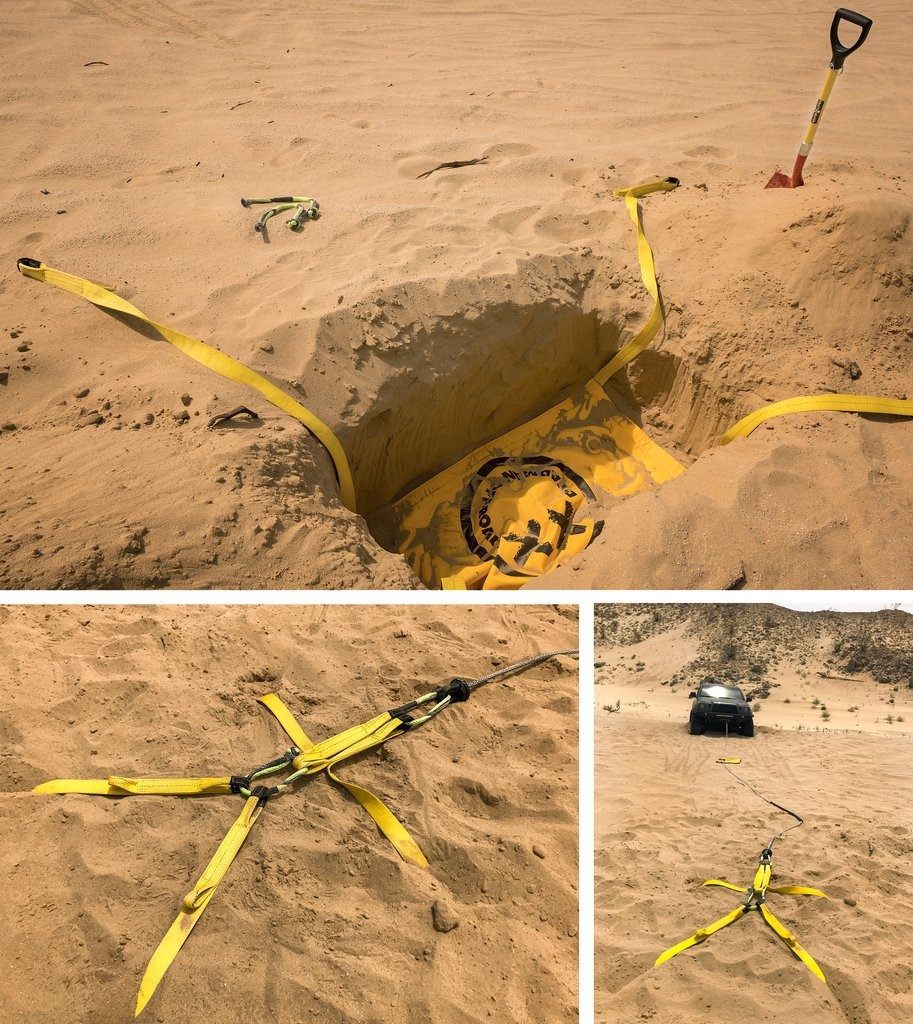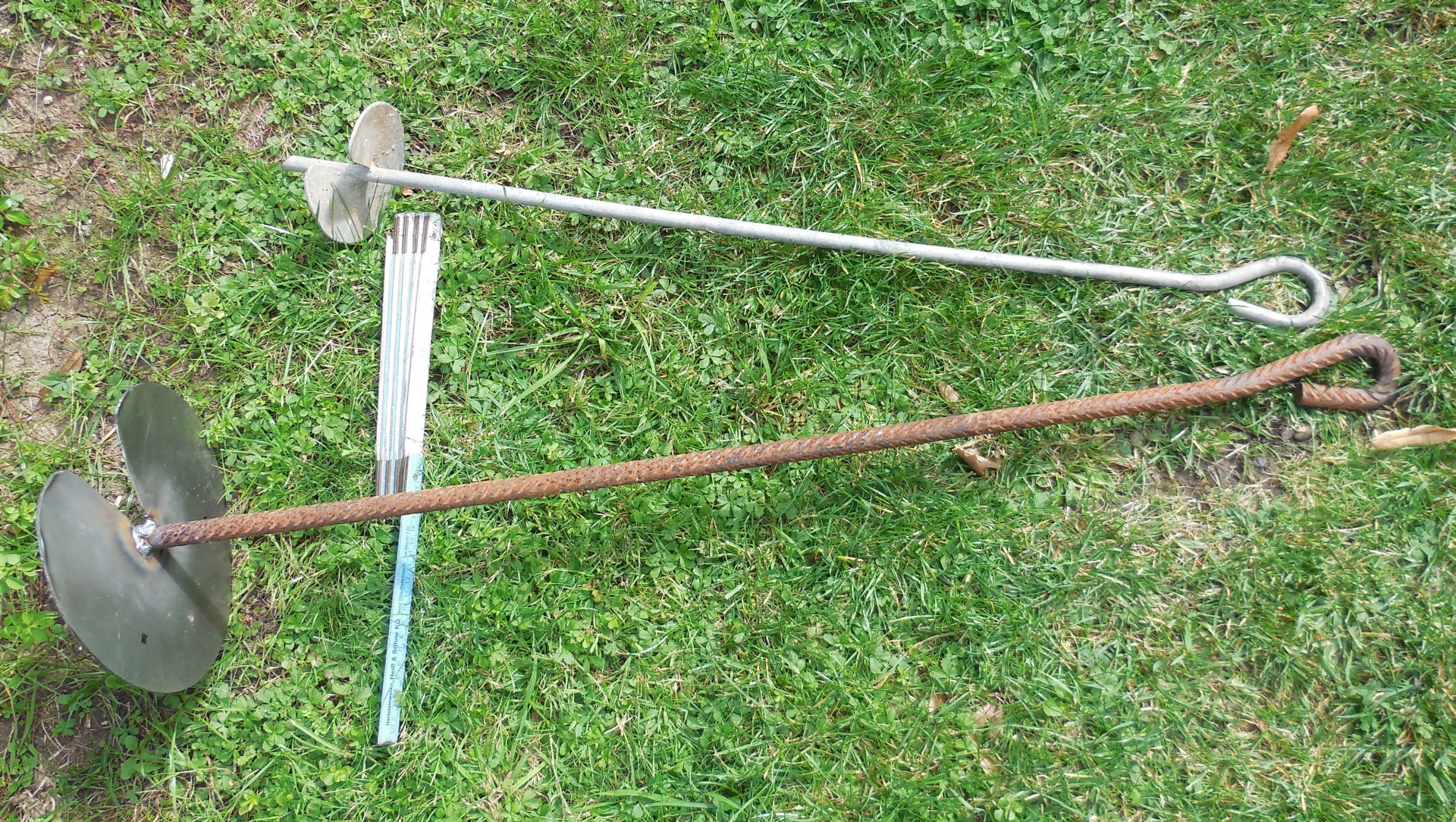Proven Results with Manta Ray anchors in High-Risk Zones
Wiki Article
How Durable Earth Anchors Job: A Comprehensive Guide to Soil Anchoring Solutions
Durable Earth supports play an essential function in giving security and support in numerous building applications. By embedding deeply into the ground, they withstand side and upright forces effectively. Different kinds of supports provide to different dirt problems, making them flexible. Comprehending their mechanics and setup strategies is necessary for optimizing efficiency. What aspects influence their effectiveness, and just how do they compare to typical approaches? The solutions may amaze you.Recognizing Durable Earth Anchors
Heavy-duty Earth supports function as crucial parts in different construction and landscape design tasks, giving security and assistance in challenging dirt conditions. These supports operate by being installed into the ground, where they stand up to upright and lateral forces. Their style permits safe and secure attachment to frameworks, ensuring they stay anchored against soil motion or external loads.The effectiveness of heavy-duty Earth supports greatly relies on the kind of dirt and the support's installment depth. Appropriate setup strategies are crucial, as they establish the anchor's holding capacity. Environmental elements, such as dampness and freeze-thaw cycles, can additionally impact performance.These anchors are often made use of in applications ranging from safeguarding fencings and preserving wall surfaces to stabilizing short-term structures during adverse weather. Comprehending the concepts behind heavy-duty Earth supports is important for professionals looking for to enhance the longevity and safety of their tasks.Types of Heavy-Duty Earth Anchors
Different sorts of heavy-duty Earth anchors are made to meet details needs based upon dirt problems and job needs. Helical anchors, featuring screw-like blades, work in softer dirts, providing high tons abilities and simple installation. Driven supports, which are hammered into the ground, appropriate for rocky surfaces and offer immediate lots support. Tie-back supports are commonly made use of in maintaining wall applications, enabling lateral assistance by securing right into the ground at an angle. One more kind is the cast-in-place anchor, suitable for concrete applications, as they are integrated right into foundations for improved stability. Finally, soil screw anchors are flexible options that can be made use of in different dirt types, giving dependable stress and compression capabilities. Each kind offers distinct applications, guaranteeing stability and safety and security in construction and landscape design jobs. Recognizing these options enables notified decisions in picking the suitable Earth anchoring remedy.The Mechanics of Soil Anchoring

Comprehending the technicians of dirt anchoring needs an assessment of different kinds of Earth supports and their installation methods. Each anchor kind provides unique features that affect its efficiency in various soil problems. Proper setup techniques are vital for maximizing the anchoring system's security and efficiency.
Kinds Of Earth Anchors
Earth supports, vital components in soil anchoring systems, can be found in several types, each made for details applications and dirt problems. One of the most common types consist of screw supports, which are turned right into the ground, offering solid lateral resistance. Helical supports feature blades that allow for effective installment in different soil kinds, making them suitable for both permanent and short-lived applications. Driven anchors, usually made from steel, are inculcated the dirt and work in thick or rocky atmospheres. Auger supports make use of a helical design to help with installment in softer soils. Lastly, plate anchors are composed of a flat plate hidden flat, distributing tons over a bigger area, perfect for applications calling for high tons capabilities in natural dirts.Installation Techniques Discussed
Correct installment methods are essential for the performance of soil anchoring systems. The process usually begins with website evaluation, validating the selected location can support the anchor's load. After identifying the right anchor kind, appropriate opening depth and angle have to be established. The installation involves driving the anchor into the ground making use of customized equipment, such as hydraulic or hand-operated motorists, to attain best embedment. Post-installation, tensioning the anchor is crucial to ensure stability; this is usually verified with load screening. Furthermore, bordering soil problems need to be kept track of to stop variation. Complying with these techniques not just improves the anchor's performance yet likewise prolongs its life expectancy, giving reputable assistance for numerous applications.Applications of Heavy-Duty Earth Anchors
While sturdy Earth anchors are often linked with building and landscaping, their convenience encompasses a selection of applications throughout various sectors. In civil design, they provide crucial support for maintaining wall surfaces, ensuring stability like it in areas vulnerable to soil erosion. The aquatic market uses these anchors for safeguarding anchors and marinas, protecting against activity triggered by tides and currents. Additionally, in the telecom sector, sturdy Earth supports are considerable for stabilizing cell towers and various other tall structures against wind forces. Agricultural applications additionally benefit, as check here these supports can protect structures like greenhouses and animals fencing, guaranteeing they stand up to severe weather problems. In addition, in renewable resource projects, such as wind ranches, Earth anchors play an essential duty in protecting wind turbine foundations, boosting total safety and performance. This wide range of applications highlights the adaptability and integrity of durable Earth anchors throughout various fields.Advantages Over Conventional Anchoring Methods
Although typical anchoring techniques have long been trusted for stability, durable Earth anchors supply substantial advantages that improve performance and effectiveness. One significant advantage is their exceptional load-bearing capability, which enables them to endure higher pressures without failing. This toughness makes them optimal for demanding applications, such as in building and construction and utility installations.Additionally, sturdy Earth supports are created for deeper installation, giving better stability in numerous dirt problems, including sandy or loosened soils. Their resistance to corrosion and ecological variables ensures a longer lifespan and lowered upkeep costs compared to conventional methods.Moreover, these anchors can be mounted with very little disturbance to the surrounding location, protecting the stability of the landscape. In general, durable Earth anchors provide a dependable and effective remedy for anchoring demands, going beyond the restrictions typically related to traditional anchoring methods.Setup Refine and Finest Practices
The installation procedure for dirt securing options begins with complete prep work and website evaluation to ensure peak efficiency. Following this, a step-by-step installation overview offers clear instructions for reliable execution (construction site anchors). Following these best methods is necessary for accomplishing durable and dependable anchoring outcomesPrep Work and Site Analysis
Efficient prep work and detailed site assessment are vital action in the installment of dirt anchoring services. Before installation, the dirt kind have to be examined to identify its bearing ability and viability for securing. Conducting a geotechnical study can provide essential info concerning soil composition, moisture levels, and potential ground motion. Additionally, identifying existing structures, greenery, and utilities is vital to avoid disturbance during installation. The area should be free from particles and challenges to guarantee safe gain access to for equipment. Climate condition need to also be kept track of, as negative conditions can affect both security and installment efficiency. By carefully preparing the website and reviewing all relevant variables, the possibility of effective anchor efficiency is considerably raised.Step-by-Step Setup Guide
A thorough installation procedure is important for accomplishing ideal efficiency of dirt anchoring remedies. The installment starts with picking the suitable support type and assuring the website is free from particles. Next, proper hole placement is figured out based on lots requirements. As soon as the place is developed, openings are drilled to the defined depth and size making use of the correct devices. The anchor is after that placed right into the hole, making certain it is aligned appropriately. After protecting the support, soil is backfilled and compacted to boost security. It is vital to comply with manufacturer guidelines throughout the process. A post-installation evaluation validates that the supports are sufficiently located and operating as meant, offering reliable assistance for the desired application.
Upkeep and Evaluation of Earth Anchors
Routine upkeep and assessment of Earth anchors are important for ensuring long-term efficiency and stability. Routine checks enable for the early discovery of concerns pop over to this site such as rust, loosening, or soil motion. Assessors ought to try to find signs of rust or deterioration on the anchor elements, especially at the connection points. Additionally, the surrounding dirt must be evaluated for erosion or adjustments in moisture material, which can affect support effectiveness.It is suggested to develop a regular assessment timetable, preferably at the very least yearly, relying on environmental conditions. Throughout inspections, all visible components need to be cleaned up to eliminate dust or debris that could conceal possible problems. Any kind of indications of distress, such as tilting structures or unusual settling, need to motivate immediate analysis. Appropriate paperwork of evaluations can help in monitoring support efficiency over time and help with timely upkeep activities, making certain the anchors remain functional and trusted.Frequently Asked Inquiries
What Materials Are Heavy-Duty Earth Anchors Commonly Made From?
Heavy-duty Earth supports are usually built from sturdy materials such as galvanized steel or stainless-steel, ensuring toughness and resistance to corrosion. These products supply durable assistance and stability in numerous soil problems and applications.Exactly How Do Soil Conditions Affect Support Performance?
Dirt problems considerably influence support performance. Variables such as dirt type, moisture web content, and compaction impact the anchor's hold and stability, with cohesive soils commonly offering better resistance than sandy or loose soils, impacting overall performance.
Can Heavy-Duty Earth Anchors Be Recycled After Removal?
Sturdy Earth supports can be recycled after elimination, given they are examined for damages and wear. Proper cleaning and upkeep boost their durability, guaranteeing reliable efficiency in succeeding installments when conditions allow for safe reinstallation.What Are the Environmental Influences of Utilizing Earth Anchors?
The ecological effects of making use of Earth anchors consist of prospective soil disruption, disturbance of local ecosystems, and possible contamination of groundwater. Nonetheless, if made use of properly, their benefits frequently surpass these issues, advertising stability in numerous applications.How Do I Choose the Right Anchor for My Job?

Report this wiki page